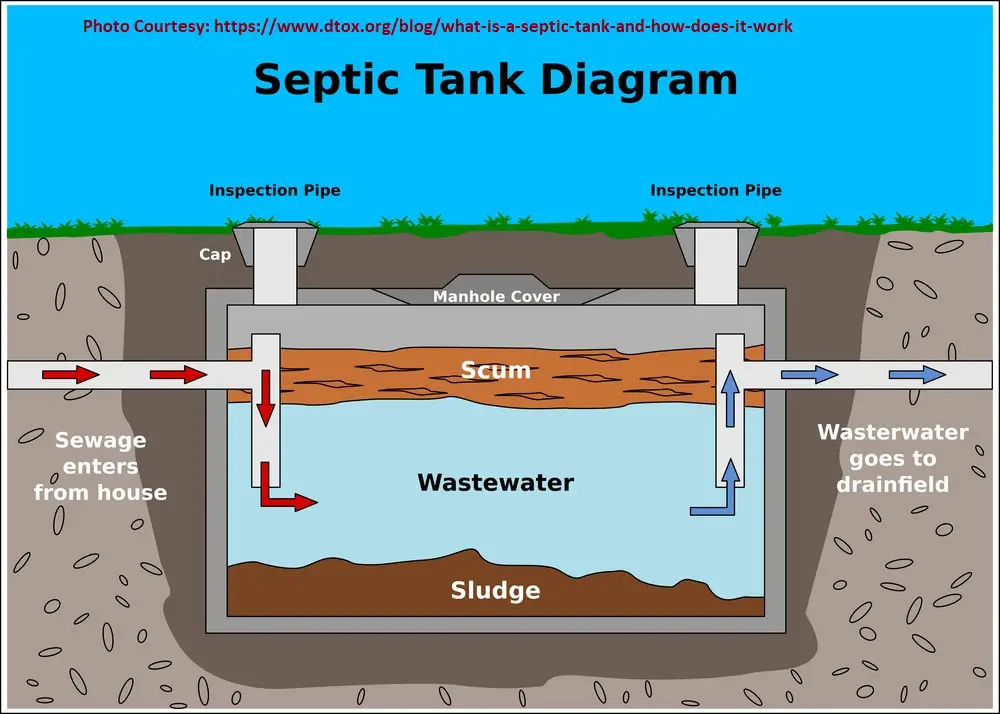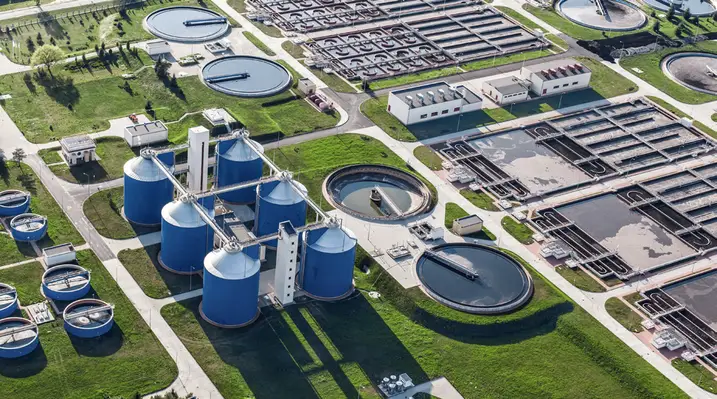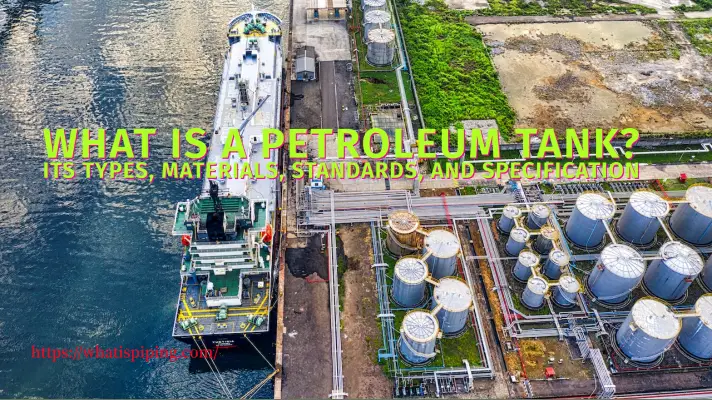Septic tanks are of vital importance for wastewater treatment as domestic sewage flows through them for basic sewage treatment. They are a type of onsite sewage facility and are widely found in areas not directly connected to a sewage system, mainly in rural areas. In this article, we will break down the working and fundamentals of a septic tank.
What is a Septic Tank?
A septic tank is an underground sedimentation tank in a wastewater treatment system. They are made of fiberglass, plastic, or concrete and can have one or more tanks. One end of the septic tank is connected to a wastewater inlet pipe and the other end to a septic drain field.
The term “septic” indicates to anaerobic bacterial environment developed in the tank to decompose the waste discharge in the tank. the design of the septic tank incorporates two chambers with an access opening and cover. A dividing wall having openings located about midway between the floor and roof of the tank separates them.
Natural proven technology and processes are used in a septic tank to treat wastewater from household plumbing produced by bathrooms, kitchen drains, and laundry. Septic tanks are usually rectangular or round in shape. The T-shaped outlet and compartments of the tank prevent the sludge and scum from leaving the tank and traveling into the drain field area. Septic tanks are always installed underground and usually 50 meters away from the household and regular maintenance is compulsory.
Working of a Septic Tank
All septic tanks are connected with two pipes; inlet and outlet. The water waste from the house is transported by the inlet piping and it is then collected in the septic tank. In the tank, the wastewater is stored for a long period of time so that the septic tank digests/decomposes the organic matter and separates floatable and solid matters like grease/oil from the wastewater.
The outlet pipe is also known as the drain field pipe which moves the processed wastewater from the septic tank to spread it in the soil and watercourses. The wastewater inside the septic tank is separated into 3 layers (Fig. 1).
- The top layer consists of oils and grease. It floats above all the waste and is usually known as “scum”.
- The middle layer contains the wastewater along with waste particles.
- The third and bottom layer consists of heavy particles that form a layer of sludge.
The bacteria present in the septic tank break down the solid waste of the wastewater which is then separated and drained easily. the left-over inside the tank should be periodically removed during maintenance.

The following is the basic step-by-step process by which a septic tank generally works:
- Domestic water from the bathroom and kitchen runs through one main drainage pipe leading to the underground septic tank.
- The wastewater is held in the septic tank for some time where the separation and decomposition process starts.
- The liquid effluent exits the tank into the drain field.
- This pretreated wastewater is then discharged through pipes onto porous surfaces that filter through the soil.
- Finally, the wastewater naturally removes the harmful bacteria, viruses, and nutrients as it percolates into the soil.
EN12566 provides the general requirements for domestic water treatment facilities.
Septic Tank Maintenance
The maintenance of the septic system must be periodically done in order to achieve proper working of the system. In general, it is the responsibility of the property owner. Regular septic tank maintenance helps in
- Clearing the inlet drain blocks generated due to excessive disposal of cooking oils and grease.
- Cleaning the clogs with non-biodegradable waste items down the toilet such as cigarette butts, and cotton buds/swabs.
- Remove the food wastes that rapidly overload the septic tank system.
- Eliminating certain chemicals like pesticides, herbicides, bleach, caustic soda, etc which may damage the septic tank or kill the bacteria.
- Cleaning the biofilms developed on the pipe can lead to blockage.
Some manufacturers promote the use of certain septic tank additives to improve the effluent quality from the septic tank. There could be some environmental problems due to septic tank operation like:
- Odor and gas emissions.
- Septic tank failures can create pathogens that can create dangerous diseases.
- In highly dense areas groundwater and surface water pollution may occur
Types of Septic Tank Systems
Septic systems vary widely in their design and sizes. Various factors are responsible for these changes. Some of the important factors are:
- household size,
- soil type,
- weather conditions,
- site slope,
- lot size,
- proximity to sensitive water bodies,
- even local regulations
Some of the most common types of septic tanks are:
- Conventional septic system consisting of a septic tank and a trench or bed subsurface wastewater infiltration system.
- Chamber septic system including open-bottom chambers, fabric-wrapped pipe, and synthetic materials.
- Drip distribution septic system with a large dose tank after the septic tank.
- Aerobic treatment unit.
- Mound septic system
- Recirculating sand filter septic system
- Evapotranspiration bed septic system
- Constructed wetland septic system
- Cluster septic system.









It’s great that you mentioned how septic tanks are of vital importance for wastewater treatment as domestic sewage flows through them for basic sewage treatment. We heard septic tanks are pretty good so we have decided to change our sewage system to use a septic tank. For that, we should contact septic tank installation services to do the work for us.
Excellent article on septic tanks! It provided a clear and informative overview of septic system maintenance and troubleshooting. The tips and guidelines will undoubtedly help homeowners like me in ensuring the proper functioning of our septic systems. Thank you for such valuable content!